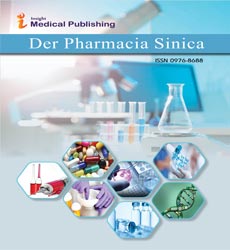ISSN : 0976 - 8688
Der Pharmacia Sinica
A Comparative study on efficacy of Ciprofloxacin with Tobramycin ophthalmic solution in acute conjunctivitis.
Abstract
Acute conjunctivitis (AC) is a common disease in both developing and industrialized countries. Conjunctivitis is an inï¬Â‚ammation of the conjunctiva usually occurs as a result of infection or allergy, resulting in a so-called “red eye” or “pink eye.” Acute conjunctivitis can be viral in nature; however, as many as 78% of cases in children and half of cases in adults are caused by bacteria. Worldwide, there are an estimated 5 million cases of neonatal infectious conjunctivitis per year. It is usually a benign, self-limited condition. Two drugs though from different groups, both exerting antimicrobial action and are extensively used in acute bacterial conjunctivitis in Nepal Medical College. It will therefore be of interest to know the difference between the efficacies of these two widely utilized drugs. Ciprofloxacin ophthalmic solution (fluoroquinolones) and Tobramycin ophthalmic solution (aminoglycosides), which are the most commonly used as topical antimicrobial agent in context of Nepal.
Open Access Journals
- Aquaculture & Veterinary Science
- Chemistry & Chemical Sciences
- Clinical Sciences
- Engineering
- General Science
- Genetics & Molecular Biology
- Health Care & Nursing
- Immunology & Microbiology
- Materials Science
- Mathematics & Physics
- Medical Sciences
- Neurology & Psychiatry
- Oncology & Cancer Science
- Pharmaceutical Sciences
